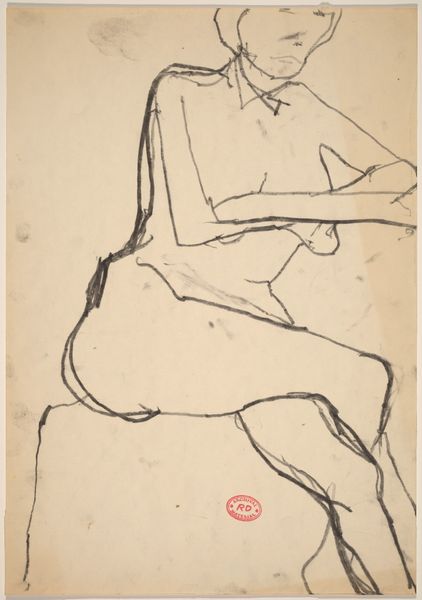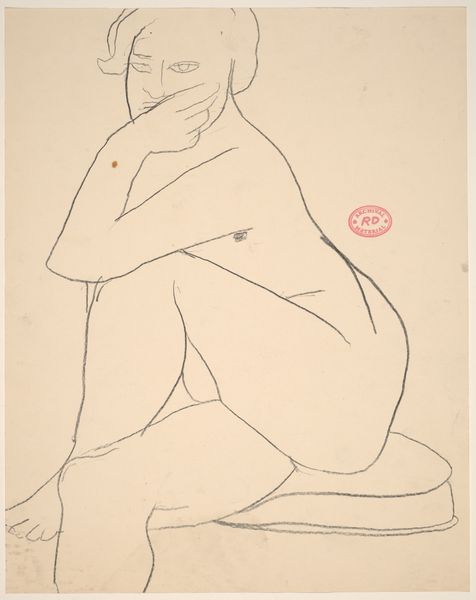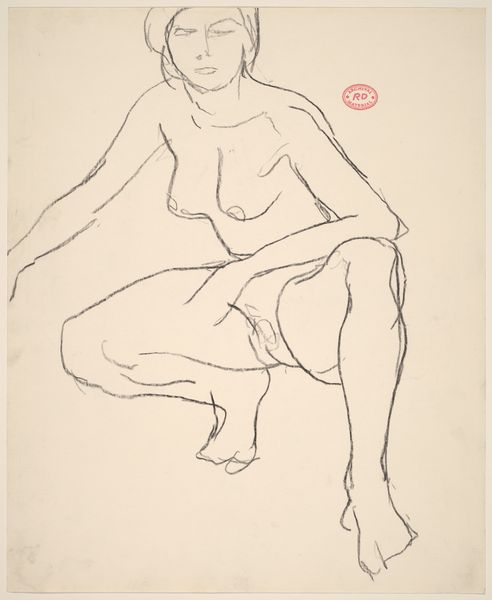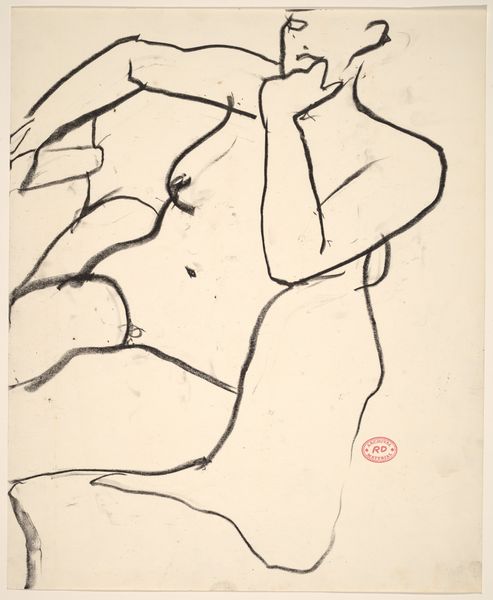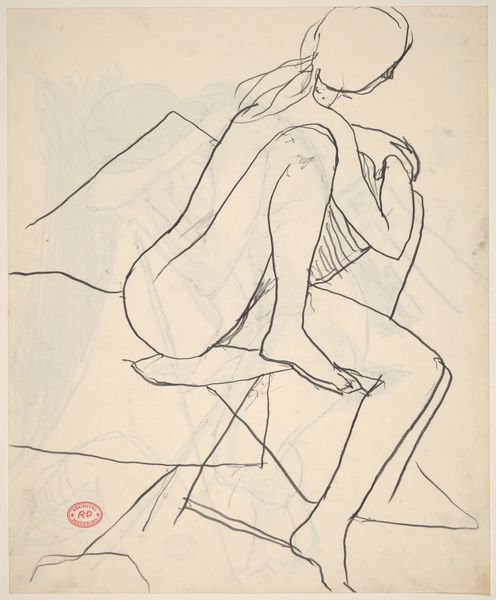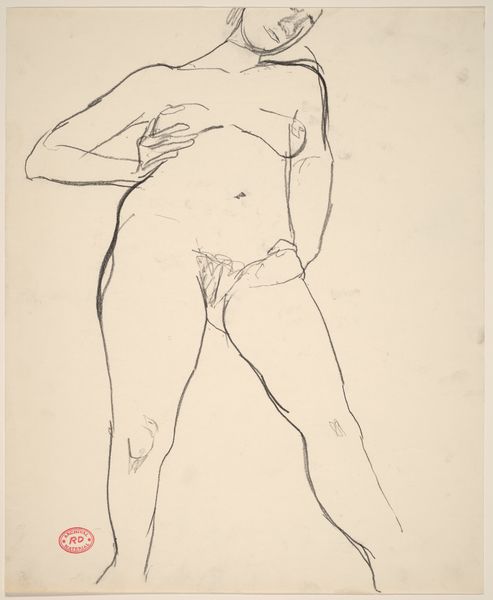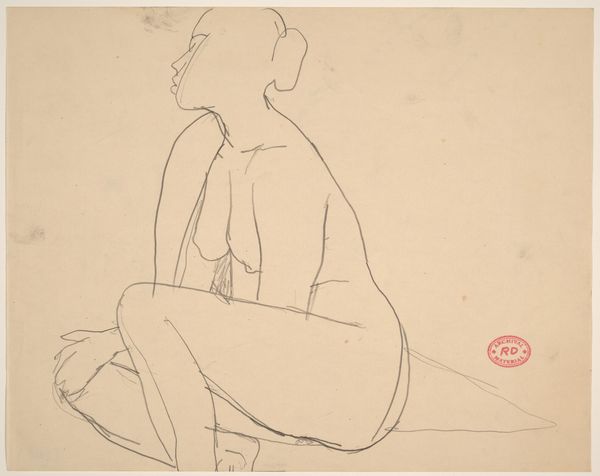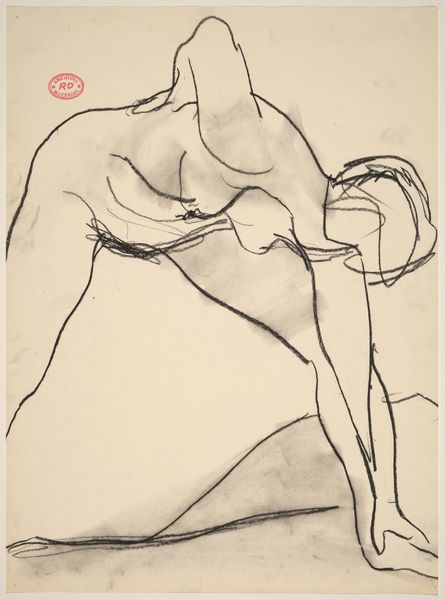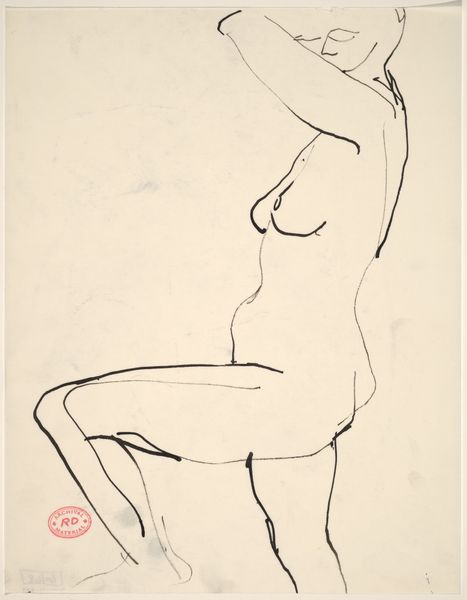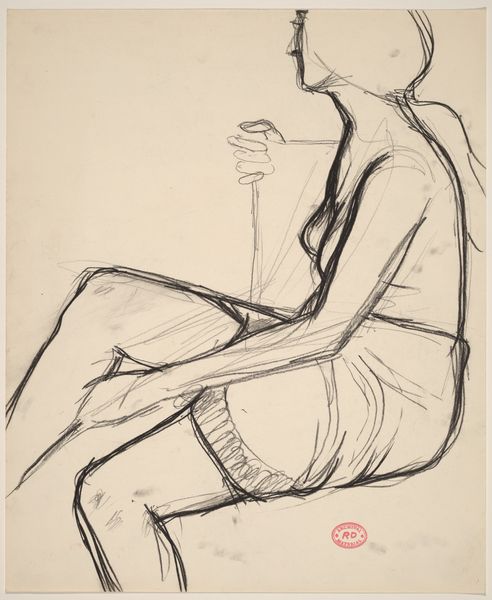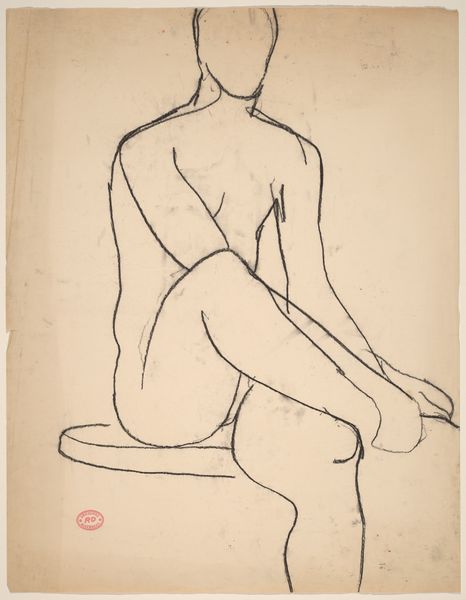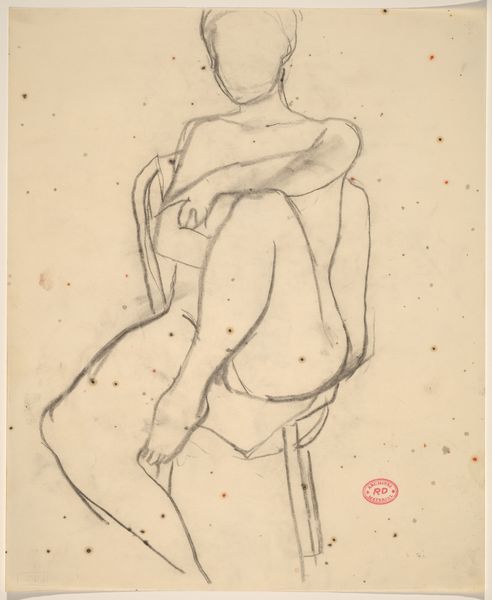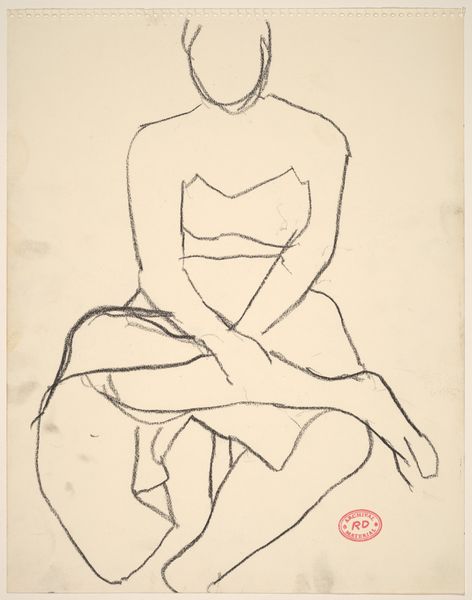![Untitled [seated model with her legs and arms crossed] by Richard Diebenkorn](/_next/image?url=https%3A%2F%2Fd2w8kbdekdi1gv.cloudfront.net%2FeyJidWNrZXQiOiAiYXJ0ZXJhLWltYWdlcy1idWNrZXQiLCAia2V5IjogImFydHdvcmtzLzc1NWE1OTcyLWI2MmQtNDhhNS05Y2E0LWYxMDQ0ODExNjkxZS83NTVhNTk3Mi1iNjJkLTQ4YTUtOWNhNC1mMTA0NDgxMTY5MWVfZnVsbC5qcGciLCAiZWRpdHMiOiB7InJlc2l6ZSI6IHsid2lkdGgiOiAxOTIwLCAiaGVpZ2h0IjogMTkyMCwgImZpdCI6ICJpbnNpZGUifX19&w=3840&q=75)
Untitled [seated model with her legs and arms crossed] 1955 - 1967
0:00
0:00
drawing, paper, ink
#
portrait
#
drawing
#
contemporary
#
ink drawing
#
pencil sketch
#
figuration
#
paper
#
bay-area-figurative-movement
#
ink
#
line
#
portrait drawing
#
modernism
Dimensions: overall: 45.7 x 35.6 cm (18 x 14 in.)
Copyright: National Gallery of Art: CC0 1.0
Editor: So, this is Richard Diebenkorn's "Untitled [seated model with her legs and arms crossed]," created sometime between 1955 and 1967. It's an ink drawing on paper. The starkness of the lines makes it feel quite raw and vulnerable to me. What's your take? Curator: It’s interesting you say that. The apparent rawness can be misleading. Consider the context: mid-century America, Abstract Expressionism in full swing. Figurative art was somewhat sidelined, yet Diebenkorn persists. He's not just capturing a likeness; he's engaging in a dialogue with art history, subtly challenging the prevailing aesthetics by reintroducing the figure. What do you make of her posture? Editor: Well, crossed arms often signal defensiveness. But her gaze is so direct. It’s a conflicting message. Curator: Exactly. And that tension is key. Think about the evolving role of women during this period. The drawing complicates easy interpretations of female identity. The lines themselves—notice how they're both assertive and hesitant. Is Diebenkorn commenting on the socio-political complexities surrounding the female figure and the male gaze in art? Editor: So, it's not *just* a sketch. It's participating in a broader conversation about representation. I didn't see that initially. Curator: Precisely! By situating this work within its historical context, we understand it not as a mere exercise in draftsmanship but as an active contribution to the ongoing debate surrounding modern art and its relationship to society. How do you feel knowing that now? Editor: I see how Diebenkorn’s choice of subject, a seated female model, becomes a political act. It has shifted how I understand this work. Thanks! Curator: And that’s the power of art history! It reveals how artworks engage with, reflect, and even challenge the societies that produce them. I’ve found it beneficial to view art in this way.
Comments
No comments
Be the first to comment and join the conversation on the ultimate creative platform.
